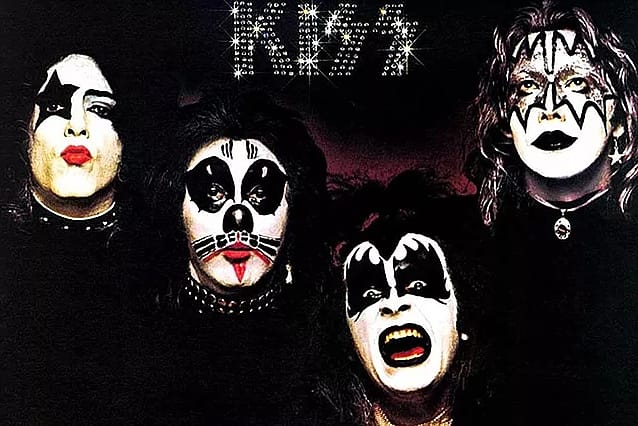
In the pantheon of rock ‘n’ roll, few debuts have sparked as much intrigue and left as indelible a mark as Kiss’s self-titled album, released on February 18, 1974.
The Genesis of a Phenomenon
It was the fall of 1973, and amidst the burgeoning glam rock scene, Kiss entered the studio with a vision that transcended the musical norms of the time. Spearheaded by Gene Simmons and Paul Stanley, the band sought to amalgamate an aggressive sound with a visually arresting stage presence. The recording sessions were a crucible of creativity, capturing the raw, unfiltered essence of Kiss’s ambition. The band’s choice to embrace a heavier sound, coupled with their theatrical flair, was a bold departure from their previous incarnation as Wicked Lester.
Cultural Context and Visual Alchemy
The early 70s were ripe for innovation, with artists pushing the boundaries of musical expression and stagecraft. Kiss, however, ventured where few had dared, adopting elaborate makeup and personas that transformed them into living, breathing comic book heroes. This visual alchemy, rooted in the Noh theater of Japan, wasn’t merely for show; it was an integral part of their identity, a way to embody the larger-than-life ethos that their music espoused.
A Symphony in Ten Acts
Each track on “Kiss” is a vignette, a glimpse into the burgeoning Kiss cosmos. From the opening salvo of “Strutter,” a swaggering anthem of confidence, to the closing epic “Black Diamond,” a gritty ode to the night’s denizens, the album is a mosaic of hard rock and melodic craftsmanship. “Cold Gin,” Ace Frehley’s inaugural contribution, celebrates the numbing allure of alcohol, while “Deuce,” a Simmons staple, delves into the complexities of relationships. The album’s lyrical themes, ranging from romance to rebellion, are encapsulated in a sound that is both raw and refined, a testament to Kiss’s dual nature as musicians and showmen.
The Theatrics of Rock
Beyond the studio, Kiss’s live performances became the stuff of legend. Their concerts were elaborate spectacles, featuring Simmons’s fire-breathing antics, Criss’s levitating drum set, and a plethora of pyrotechnics. These performances were not mere concerts; they were rituals, communal gatherings where fans could bask in the glory of Kiss’s sonic and visual bombardment. The band’s dedication to their craft extended to learning these theatrics from professionals, with Simmons being taught the art of fire-breathing by a magician, ensuring that each show was an unforgettable experience.
Legacy and Reverberation
Despite a lukewarm commercial reception initially, “Kiss” laid the foundation for what would become a monumental career. The album’s gold certification in 1977 was a belated acknowledgment of its impact. Over time, tracks like “Strutter” and “Cold Gin” have transcended their origins, becoming anthems for generations of rock fans. Kiss’s debut is not just a collection of songs; it’s a declaration of intent, a manifesto from a band that refused to be confined by the conventions of their time.
“Kiss” is a cultural artifact, a testament to a band that dared to dream in technicolor. Through their fusion of sound and spectacle, Kiss challenged the very notion of what a rock band could be, forever altering the landscape of music and performance art. The album’s legacy is a testament to the enduring power of innovation, a beacon for those who dare to tread the path less traveled.
This exploration of Kiss’s debut album reveals the layers of artistry and ambition that propelled four musicians from New York into the stratosphere of rock legends. Their journey, marked by this seminal album, continues to inspire and captivate, proving that some flames, no matter how fiercely they burn, never truly go out.





Leave a Reply